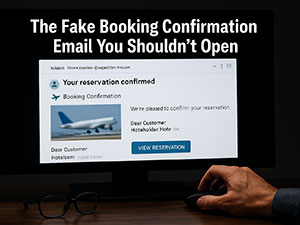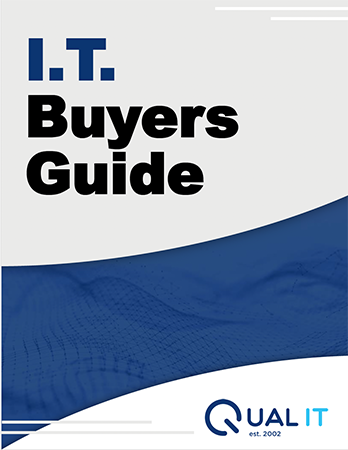 By Austin McDonald | Qual IT
By Austin McDonald | Qual IT
It’s almost summer, and while your team might be planning vacations, cybercriminals are planning attacks. One of the most dangerous? A fake travel confirmation e-mail that looks just real enough to trick even your most experienced team members.
If your firm handles travel for conferences, client meetings, or vendor site visits, this isn’t just a personal risk—it’s a business risk.
How This Scam Works
- A Fake Travel E-mail Arrives
It looks like it’s from Delta, Marriott, or Expedia. It’s got all the right logos, formatting, and even a fake customer service number.
Subject lines like:
- "Your Trip To San Diego Has Been Confirmed! Click Here For Details"
- "Flight Change Notification – Action Required"
- "Final Step: Confirm Your Hotel Stay"
- You Click—and Land On A Fake Site
The link sends you to a spoofed website that asks for your login credentials or payment info. Sometimes it delivers malware right to your device. - Hackers Steal Everything
Once inside, they can:
- Drain your credit card
- Access your business travel accounts
- Inject malware into your company network
Why Salt Lake City Architecture Firms Are Prime Targets
Your team travels. You rely on quick email confirmations to stay organized. But your project manager in the field or operations assistant booking flights may not realize a scam has landed in their inbox.
The result?
- Compromised credentials tied to your business accounts.
- Stolen financial info from corporate cards.
- Malware infiltrating your shared network.
It’s not just a nuisance. It’s a full-blown security event.
Why This Scam Works So Well
- Looks Authentic: Real logos, real email templates.
- Creates Panic: Urgent subject lines get people to act fast.
- Taps Into Distraction: Travel is busy. When you’re focused on flights and meetings, your guard drops.
How To Protect Your Architecture Firm From Fake Booking Scams
- Go Straight To The Source
Never click travel confirmation links in emails. Instead, log in to the provider’s website directly.
- Check the Sender’s Email Address
Scammers use subtle changes (like @marriot-bookings.net) to trick users. Always verify it’s from the real domain.
- Train Your Team—Especially Admins
If you’ve got an assistant or admin handling bookings, they need to be trained to spot phishing scams.
- Turn On MFA (Multi-Factor Authentication)
If someone’s credentials do get stolen, MFA stops attackers from logging in.
- Secure Your Email Environment
Use filters and threat detection to catch phishing links before they hit inboxes.
Don’t Let a Fake E-mail Cost You a Client or Project
Your firm’s reputation—and your client’s trust—depends on protecting sensitive info. One fake booking email shouldn’t be the reason you lose it.
At Qual IT, we specialize in cybersecurity for architecture firms in Salt Lake City. From phishing prevention to email threat monitoring, we help protect your team from the attacks they don’t see coming.
[Click here to schedule your FREE Cybersecurity Assessment today.]



